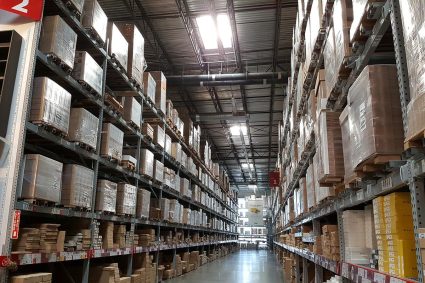

In today’s fast-paced business environment, efficient inventory management is crucial for the success of any organization. Manual inventory management processes are prone to costly errors, such as stockouts, overstocking, and inaccurate data recording. However, the advent of automated inventory management software has revolutionized the way companies handle their inventory. By streamlining operations and minimizing errors, these software solutions offer significant cost-saving opportunities. In this article, we will explore how automated inventory management software can help businesses optimize their inventory control and reduce expenses.
Streamlined Operations: Automated inventory management software simplifies and accelerates inventory-related tasks. It enables companies to track and manage their inventory in real-time, providing accurate visibility into stock levels, sales data, and order fulfillment. By automating tasks such as inventory tracking, replenishment, and order management, businesses can eliminate manual errors and reduce the time required to complete these processes. The software’s advanced algorithms also assist in demand forecasting, ensuring optimal stock levels and preventing stockouts or overstocking.
Error Reduction: Manual inventory management processes are highly susceptible to human errors. Miscounting, incorrect data entry, and misplaced items can lead to significant financial losses. Automated inventory management software minimizes these errors by providing a centralized database that synchronizes information across various systems. Barcode scanning and RFID technology further enhance accuracy by reducing the risk of data entry mistakes. The software’s automated alerts and notifications also help identify discrepancies, such as stock discrepancies or expired items, before they escalate into more significant issues.
Cost Savings: Implementing automated inventory management software offers several cost-saving benefits. First and foremost, it reduces the need for excessive safety stock levels, as accurate demand forecasting ensures optimal inventory levels. This helps free up valuable warehouse space and minimizes inventory holding costs. Moreover, by automating inventory-related tasks, businesses can reduce labor costs associated with manual counting, data entry, and reconciliation processes. The software’s ability to prevent stockouts and overstocking also eliminates potential losses due to missed sales or obsolescence.
Enhanced Efficiency: Efficiency is a key factor in inventory management, as it directly impacts customer satisfaction and overall business performance. Automated inventory management software enables businesses to fulfill customer orders quickly and accurately, leading to improved customer service and retention. Real-time visibility into inventory levels and order statuses allows for efficient order processing and timely replenishment. Furthermore, the software’s analytical capabilities provide valuable insights into inventory performance, allowing businesses to identify and eliminate bottlenecks, optimize stock allocation, and streamline supplier relationships.
Conclusion: Automated inventory management software has become an indispensable tool for businesses seeking to optimize their inventory control processes. By streamlining operations, reducing errors, and enhancing efficiency, this software offers significant cost-saving opportunities. Companies that implement such solutions can benefit from accurate demand forecasting, reduced labor costs, improved customer service, and enhanced overall performance. As technology continues to advance, automated inventory management software will undoubtedly play a vital role in helping businesses stay competitive in the dynamic marketplace.


















